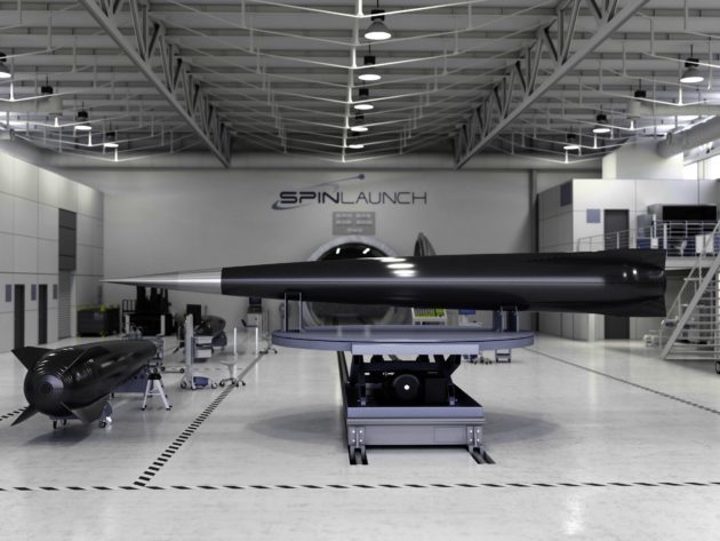16.06.2018

A stealthy Silicon Valley startup called SpinLaunch says it’s raised a total of $40 million from a high-profile array of investors to get a space catapult system ready for launch by 2022.
The company, founded in 2015 by CEO Jonathan Yaney, has been working on an electric-powered kinetic energy launch system that starts by whipping the vehicle around on a centrifuge, then catapults it spaceward at hypersonic speeds.
“Applying the initial performance boost from a terrestrial-based launch platform enables us to lower the cost by orders of magnitude and launch many times per day,” Yaney said today in a news release.
SpinLaunch’s funding includes a newly closed $35 million Series A funding round by an investment syndicate including Airbus Ventures, GV (formerly Google Ventures) and Kleiner Perkins.
The syndicate joins institutional investors including Lauder Partners, ATW Partners, Bolt and Starlight Ventures to bring total funding to $40 million. The funds will be used to scale up the team and technology, SpinLaunch said.
The company said it was considering four states in the U.S. for launch sites. Although SpinLaunch didn’t name the states, past reports suggest that the list includes Hawaii, where there’s already been some resistance to the idea. Alaska, Florida and California have been mentioned as well.
Wen Hsieh, general partner at Kleiner Perkins, said he and fellow investors were “very intrigued” by the fact that SpinLaunch’s system doesn’t plan to rely on traditional chemical rocket propulsion to get its vehicles off the ground.
“SpinLaunch can be powered by renewable energy sources such as solar and wind, thereby eliminating the use of toxic and dangerous rocket fuels,” Hsieh said. “SpinLaunch’s unique and proprietary approach to place satellites into low Earth orbit is not only highly cost-efficient, but also safe and green.”
Mass drivers, catapults and space guns have been the stuff of science fiction since the days of Jules Verne’s “From the Earth to the Moon.” In real life, NASA studied the use of linear rail launchers to give scramjet-equipped aircraft an initial boost.
The technology faces steep challenges, however: A catapult would have to produce tremendous force to execute an orbital launch, and the aerodynamics for slinging a vehicle through the atmosphere at hypersonic speeds could get dicey.
Quelle: GeekWire
